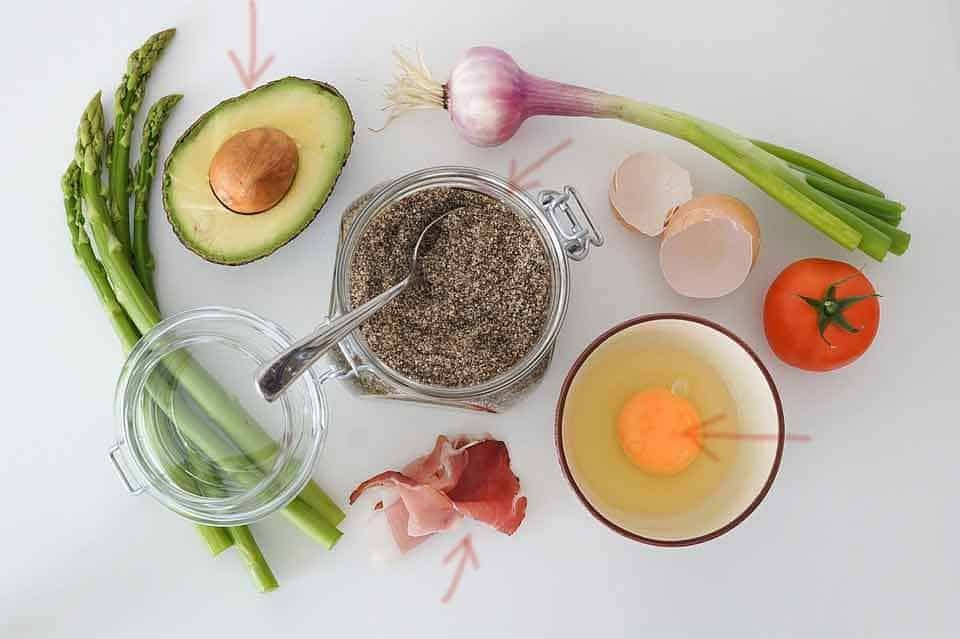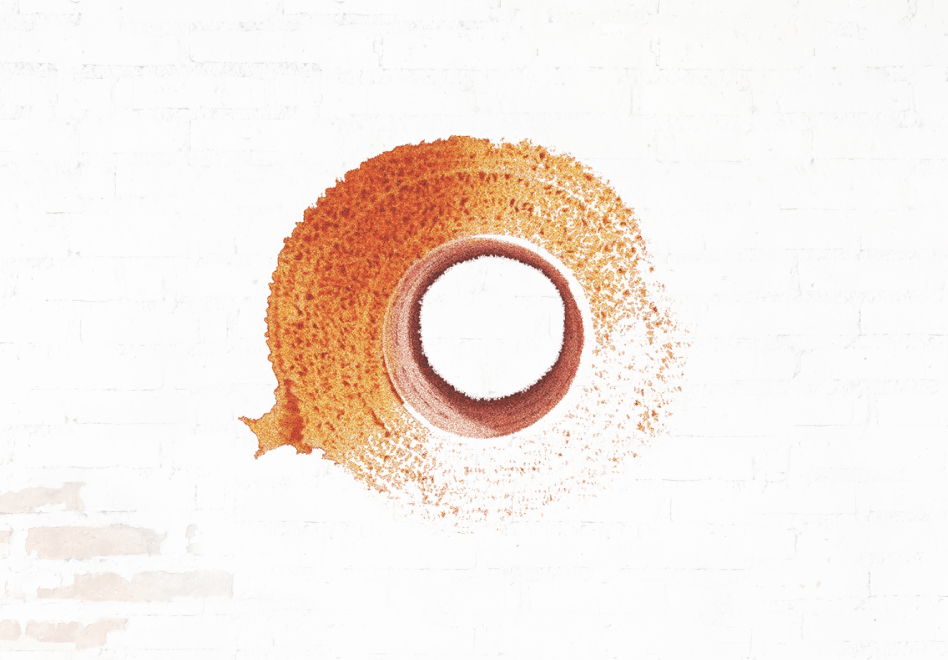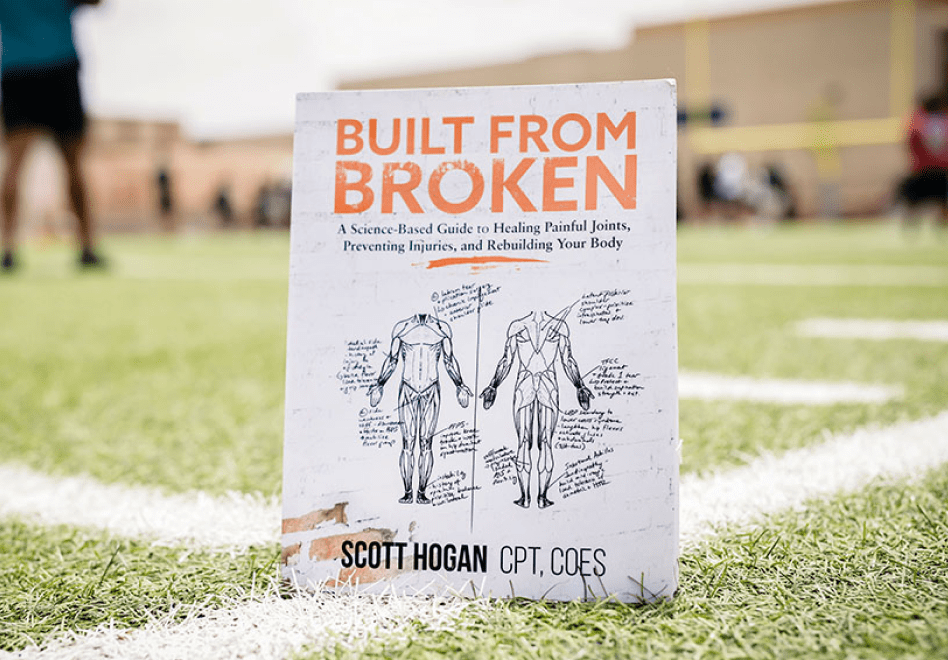
Be built (to last).
The right supplements can help you recover naturally and build a resilient body.

Supplement Quiz
Take this short quiz to discover the perfect supplements for your needs and goals.
About SaltWrap

Built from Broken
Get the best-selling book from SaltWrap founder, Scott Hogan, and start rebuilding today.
The Anti-Inflammatory Diet, Simplified
by Scott Hogan, ACE-CPT, COES
From avoiding nightshades to cursing all forms of dairy, the wacky world of Anti-Inflammatory Diets has gotten... well... wacky.
The back-and-forth debates on which foods to eat, which to avoid, and exactly how to brew your coffee for maximum anti-inflammation benefits have muddied the water.
In this article, we aim to simplify anti-inflammatory eating. We'll go through the best foods to add and avoid. But more importantly — we'll lay out a framework that makes low inflammation eating much easier. And more effective.

Your favorite anti-inflammatory diet is likely just the opposite.
Or at the very least, it's pointing you in the wrong direction.
Popular anti-inflammatory diets like Whole30 forbid entire food categories, including: beans, all grains, and dairy products.
Tom Brady's eyebrow-raising diet excludes all foods in the "nightshade" family (including tomatoes, potatoes, and any food that can't run a proper slant route).
Various fasting protocols purport to lower inflammation just by changing when you eat.
The only common thread among these approaches seems to be that they've all picked their own villain to focus on.
For some, the villain is beans.
For others, it's grains - or dairy - or foods that contain carbohydrates.
Who's right? (..are any of them right?)
What does the research say?
Like most polarizing topics, the answer lies somewhere in the middle of all these extremes.
This article aims to simplify anti-inflammatory dieting by helping you understand:
-
What inflammation is, and why (sometimes) it's a bad thing
-
How your diet can either raise or lower inflammation levels
-
The most effective, researched-backed anti-inflammatory diet tactics for weight loss, pain relief, and disease prevention
"Whoa! Look at that Table of Contents! I thought you said this was a simplified anti-inflammatory diet!?"
Ok.. fair enough. If you want to skip to the part about exactly what to eat and do for healthy inflammation levels.. click on "Science-Backed Ways to Lower Inflammation" in the Table of Contents above.
But it helps to understand the logic and science behind inflammation in the first place. If you're in for a deeper dive, keep reading >>
What is an anti-inflammatory diet?
An anti-inflammatory diet is a meal plan that focuses on:
(a) consuming foods that help reduce inflammation, and
(b) avoiding foods that increase inflammation.
Because there are dozens of variations, I wouldn't say there is one specific protocol we can point to and say "that is THE Anti-Inflammatory Diet."
Even so, most anti-inflammatory diets have a few things in common:
- The goal of reducing low grade, chronic inflammation.
- Avoidance of foods that are known to cause inflammatory responses.
- A focus on including foods that actively fight unhealthy inflammatory responses.
Before showing you a simplified (and more effective) approach, you need to understand the basics of inflammation — including why it's a problem in the first place.
There are a lot of misconceptions about anti-inflammatory diets.
And about inflammation in general.
These core concepts will allow you to cut through the diet industry hype, focus on what matters, and build your own customized anti-inflammatory plan.
In the sections below, we've summarized the following for you:
- The Three Phases of Inflammation
- Good vs. Bad Inflammation
- Symptoms & Risk Factors of Chronic Inflammation
- Benefits & Goals of Low Inflammation Eating
- Critical Problems with Popular Anti-Inflammatory Diets
- A Simplified Anti-Inflammatory Diet
🔬 What is inflammation?
Inflammation is part of your body’s immune response, primarily designed to heal injuries and defend the body against foreign invaders.
In the case of a burn or injury, inflammation is a critical process for healing.
Without enough inflammation, oxygen and regenerative nutrients can’t make their way to the injury site to start the healing process.
But, when inflammation stays high for a long time, a host of cascading, negative side effects start coming to the surface.
This can lead to the breakdown of joint structures, heart disease, and even damage to your gut lining.
Three Phases of Inflammation
There are three main types (or phases) of inflammation: acute, subacute, and chronic.
1. Acute Inflammation
Acute inflammation refers to the immediate immune response your body initiates after encountering an injury, pathogen, or anything that threatens that meat-suit of a body you walk around in all day.
Think about the last time you smacked your head on something.
Within seconds, you noticed redness and swelling.
While some of that can be explained simply as tissue damage, most of the physical changes you see are caused by the rush of blood and nutrients your body is pumping to the injury site.
The purpose of all this commotion is to deliver oxygen and nutrients to repair and remove damaged tissue.
Acute inflammation is a crucial process for healing injuries and wounds, and for aiding muscle growth and repair.
Generally, it's a good thing.
This process is short-lived. Lasting anywhere from a few hours to a few days.
Protocols like ice therapy and compression are often used to reduce pain and limit swelling — but your body needs a certain amount of acute inflammation to heal itself.
2. Subacute Inflammation
Subacute inflammation describes the transition period between acute and chronic inflammation. This phase lasts roughly two to six weeks.
This is not generally considered one of the main categories of inflammation, but it's worth mentioning here because it is a pivotal time period.
Successful intervention during this phase can send the injury recovery process on a shorter path. While failing to do so, or doing things that make the injury worse, will send the body toward chronic inflammation.
3. Chronic Inflammation
Chronic inflammation is low-grade inflammation that lasts for periods of several months or longer (for years, or the rest of a lifetime, in many cases).
Though chronic inflammation can be an extension of an acute injury, it generally arises in environments where one or more variables (like disease states or poor nutrition) is present — causing systemic, total-body inflammation.
Inflammation: The Good, The Bad, and The Deadly
Inflammation isn't necessarily good or evil.
In the acute phase, inflammation is necessary to deliver fresh oxygen and nutrients to injured tissues and organs. Even in the subacute phase, some inflammation is necessary to stimulate and continue the healing process.
But when inflammation lasts for several weeks, or months, it becomes a big problem — increasing risk of multiple deadly diseases.
In fact, the "Inflammation Theory of Disease" states that chronic inflammation is the underlying cause of or main expediting factor in most common diseases: including heart disease, cancer, diabetes, arthritis, and Alzheimer's disease.
Over the past few decades, evidence supporting this theory has piled up. This has aided our understanding of the biggest scourges of humanity and opened up new treatment options.
Whether or not inflammation is the cause of most diseases or not, it's clearly a factor.
And, the negative effect on quality of life doesn't get enough attention.
Chronic inflammation leads to obesity, chronic pain, and depression.
It doesn't just damage your health over the long term.
It makes you miserable in the short term. Severely handicapping your quality of life.
Because so much of the media and documentation on inflammation focuses on deadly diseases, this point gets lost. So it's worth mentioning again.
If you have low-grade chronic inflammation, it's damaging your quality of life in every way — the way you look, how you feel, and even how effectively you think. The list of common symptoms below makes this point abundantly clear.
Symptoms of Chronic Inflammation
Symptoms of chronic inflammation are far ranging, including everything from general fatigue to weight gain. While most people have or will experience one or two of these symptoms, pay close attention if several of these describe you:
- Weight gain (especially around the midsection)
- Fatigue, brain fog, general lethargy, insomnia
- Joint and muscle pain, spasms, or cramps
- Depressed mood and anxiety
- Digestive discomfort (gas, diarrhea, constipation, stomach cramps & pains)
- Skin disorders including easily irritated skin, persistent redness or puffiness, eczema and psoriasis
- Frequent infections, colds, and illnesses
- Frequent allergic reactions and allergy symptoms
Causes & Risk Factors for Chronic Inflammation
While some of these are out of your control — like genetics and age — you can influence most of the factors that lead to chronic inflammation.
-
Age: Human aging is characterized in part by chronic, low-grade inflammation. It appears to be a normal part of aging to some degree, even earning the term "inflammaging" to describe the correlative relationship.
-
Nutrition: Diets high in refined foods and sugar are associated with greater production of pro-inflammatory cytokines.
-
Obesity: Obesity and inflammation are inexorably linked due to several factors, including poor lifestyle choices and increased stress on organs and joint systems.
-
Stress: Accumulating evidence suggests that chronic inflammation worsens stress-induced diseases. And because the opposite is also true — stress worsens inflammation — this suggests a common pathway for stress-related diseases that is based on chronic inflammation.
-
Sleep Disorders: Circadian rhythms (sleep cycles) regulate both our immune system and inflammation levels. But it doesn't take a chronic condition like insomnia to cause a problem. Studies show just one single night of sleep loss increases inflammation in the body.
-
Smoking: Cigarette smoking causes chronic inflammation not just in the mucosal passages and sinuses, but in your entire body.
- OTC Drugs, NSAIDs, Alcohol, and Prescription Medication: Alcohol and drug abuse are linked to chronic inflammation. But even over-the-counter NSAIDs (non-steroidal anti-inflammatory drugs) designed to lower inflammation can have detrimental effects. This is partially due to the inflammation rebound you experience after withdrawing from use.
Do anti-inflammatory drugs and NSAIDs promote chronic inflammation?
Paradoxically, long-term use of NSAIDs like naproxen and ibuprofen can actually increase levels of low-grade chronic inflammation.
A study published in the journal Medical Hypothesis concluded that use of anti-inflammatory agents could down-regulate our body's natural ability to manage inflammation.
Besides the myriad of negative side effects associated with long term use of anti-inflammatories, this is another reason why drugs and OTC products are not a viable long-term solution.
And, why we recommend natural methods of managing inflammation, pain and oxidative stress.

Use NSAID's for cuts, bumps and bruises. Not for managing symptoms of chronic inflammation.
The Benefits of Low Inflammation Eating
Now that we've established WHY inflammation is bad, and exactly WHAT it does —it's worth addressing what the benefits of eating an anti-inflammatory diet are.
While you could easily just reverse the list of "symptoms of" we already discussed, here is what you can expect by following a true anti-inflammatory diet (that is, an eating strategy that systematically and progressively reduces levels of inflammatory markers in your body).
-
Improved mood: One study spanning 7 years showed that participants who followed a low inflammation diet had a 98.6% lower chance of developing depressive symptoms.
-
Weight loss: The Elimination Effect of an anti-inflammatory diet removes most of the foods that cause weight gain in the first place, including: high-sugar foods, fast food, calorie containing beverages, and artificial fats.
-
Reduced pain levels: Anti-inflammatory foods contain compounds that naturally reduce pain levels. Example: Extra-Virgin Olive Oil inhibits inflammatory enzymes in the same way that ibuprofen does.
-
Reduced risk of heart disease: Low inflammation diets reduce the risk of heart disease, partially by preventing atherosclerosis (build up of plaque on artery walls).
-
Improved cognitive function: Chronic inflammation is linked to neuroinflammation — inflammation of nerve tissue — a condition that causes brain damage and is linked to degenerative disorders.
- Protection against several types of cancer: A population study of 1,784,404 people demonstrated that anti-inflammatory eating reduces risk of colorectal, breast, gastric, prostate, liver, head, neck, pancreatic, and respiratory cancer.
Inflammation Markers: Methods of Measuring Success
There are three primary methods of measuring inflammation:
-
C-reactive protein levels (hs-CRP): blood levels of this protein increase along with inflammation. This is the most common marker of inflammation, and one that can be easily tested from a blood draw.
-
Homocysteine levels: high blood levels of this amino acid are linked to inflammation and heart disease. While usually not used as a stand-alone measure, doctors often order this test along with C-reactive protein to see how inflammation is impacting your health.
- A1C levels (blood sugar measurement): The hemoglobin A1C test measures blood sugar levels, and is typically used to measure damage to blood cells from inflammation or in connection with diabetes.
If you want a more objective method of measuring your anti-inflammatory efforts — ask your doctor to help you set benchmarks for each measure above, and monitor them over time using a series of lab tests.
While it would be ideal to have benchmark levels of these three indicators, it's much more practical to monitor changes in weight (body fat), pain levels, energy, and cognitive function.
If you are losing excess body fat and noticing improvements in these measures, your inflammation levels are almost certainly improving as well.
Science-Backed Ways to Lower Inflammation
As more research emerges linking inflammation with obesity, chronic pain, and disease — the popularity of anti-inflammatory dieting has followed.
Tom Brady's unconventional diet, Whole30, the Paleo Diet, Vegetarianism, the Carnivore Diet (eating only meat), and various Intermittent Fasting protocols all purport to reduce inflammation levels in the body.
Should you be worried about nightshades?
Nightshade vegetables are a family of plants called Solanaceae. Common 'nightshades' include tomatoes, white potatoes, egg plant, and bell peppers. Another plant in this category is belladonna—aka "Deadly Nightshade." While belladonna is toxic, potatoes and tomatoes are just fine. Though some popular diets have perpetuated this myth, there is no solid evidence that this humble family of vegetables causes inflammation. In fact, many nightshades like cayenne pepper and bell peppers are known to actually reduce inflammation.
So, what is the best way to approach anti-inflammatory eating?
Should you eat ONLY meat? Or eat ONLY plants?
Should you fast for several hours each day? Or eat several small meals throughout the day?
Should you indulge in wine and dark chocolate? ... or avoid all alcohol and caffeine?
With so many wildly different methods... who is right?
Let's simplify this.
Here is what we know works.
These are consistent principles throughout all successful anti-inflammatory diet plans with peer-reviewed research to back them up:
-
Reduce or eliminate refined carbohydrates: This includes cookies, cakes, pasta, baked goods, candy, desserts and high-sugar beverages. These foods dramatically raise blood sugar levels and insulin levels, causing inflammation levels to spike.
-
Reduce or eliminate processed "seed" oils: Canola oil, peanut oil, margarine, soybean oil, sunflower oil and other processed plant oils are easily oxidized, creating free radicals that raise inflammation levels and damage cells and DNA in your body.
-
Add more healthy fats (focusing on omega-3's): Healthy fats such as the omega 3's founds in fish or the monounsaturated fatty acids (MUFAs) found in olive oil help lower inflammation levels.
-
Consume more antioxidant rich foods: Antioxidants are compounds that reduce oxidative stress in the body, thereby lowering inflammation. Though fruits and vegetables get most of the press, other foods including dark chocolate, pecans, and even coffee are also rich in immune-boosting antioxidants.
-
Use anti-inflammatory spices on foods instead of packaged condiments: Most off-the-shelf condiments are full of sugar and preservatives. Instead, focus on using herbs and spices like turmeric, cinnamon, and peppercorns that help fight inflammation naturally.
-
Get more exercise: Just 20 minutes of exercise produces a cellular response that lowers inflammation.
-
Reduce stress levels: This doesn't get enough attention. But high stress levels are correlated with weakened immunity and increased inflammation.
-
Get more sleep: Sleep deprivation increases inflammation in multiple ways. One example: during sleep the body goes through a natural recovery period in which blood pressure and inflammation levels drop.
Though these concepts are relatively simple, it's more difficult to assemble them into a system.
To construct meals from, and to use as a guideline for WHAT, WHEN and HOW to eat.
Most diets either lack clear guidelines, or are overly restrictive to the point of reducing diet adherence (or, if you do stick with it - you're miserable).
But, there's a better way.
Problems with Anti-Inflammatory Dieting
For all their good intentions, anti-inflammatory diets have some serious problems.
Let me stop right here...
I shouldn't imply that all these diet gurus have good intentions.
For example - if your favorite nutrition expert is telling you that lectins are the source of all disease... and that avoiding beans and tomatoes is vital to your health.. shut the book. Then throw it in the trash. Then burn the trash can.
[See: The Real Story on Lectins.]
Not only do many anti-inflammatory diets make unsupported claims, they inject an unnecessary amount of restriction. And even point your focus to the wrong tools for reducing chronic inflammation. Here are some of the main problems with anti-inflammatory diets:
They lack clear guidelines.
Most anti-inflammatory diets tell you to "avoid these foods" and "add those foods" without clear guidelines.
"If a tomato is the berry of a nightshade plant.. and I'm supposed to avoid it.. how often can I have them? Does that mean I should never dip my fries in ketchup again? Never enjoy another Caprese salad??"
Whether we want to admit or not, we're all like little kids. We need clear boundaries. Without them, we're constantly testing the limits. Seeing how much we can get away with.
They're too restrictive.
Anti-inflammatory diets tend to focus on exclusion. What foods you must avoid at all costs.
And the lists of excluded foods can be into the hundreds. With so much restriction, the joy of eating is zapped right off your plate.
They neglect crucial lifestyle variables.
It's not good enough to focus only on anti-inflammation eating. To reduce low-grade chronic inflammation you should address exercise habits, sleep, stress, and body composition (body fat). What foods you eat is only one piece of the inflammation puzzle.
They tend to "major in the minors."
Majoring in the minors is a phrase I like to use when a person (or program) is incessantly focused on minuscule details. While ignoring the few fundamental, impactful things that need addressed.
They're lost in the weeds instead of walking on the main trail. They focus on individual food items that might cause an acute inflammation response, while ignoring the larger factors (like overall fitness, body fat levels, and stress) that impact systemic inflammation.
A Better Way: The Anti-Inflammatory Diet, Simplified
Food quality is important. For overall health, longevity, energy levels, and just feeling good.
BUT — just focusing on food quality (e.g. organic, non-GMO, etc.) is not the most effective strategy for reducing inflammation. It's certainly not the easiest way. And often times doesn't cut it for solving low-grade, chronic inflammation.
What we recommend is inserting low-inflammation foods into a framework that makes the whole thing easier. And more effective.
Instead of just worrying about which foods are on your plate — you can use meal timing, macronutrient profiles, 'eating windows' and even sleep habits as your biggest levers for affecting change.
Conclusion
The anti-inflammatory dieting landscape is a total quagmire.
It's overly complex. Fear-mongering. And often not backed by science.
Hopefully this article cleared up some of the misconceptions about how to lower inflammation levels with diet.
Instead of getting lost in the weeds, focus on the few principles that we know work:
-
Avoid refined foods
-
Consume more antioxidant rich foods
-
Exercise
-
Manage your stress levels
-
Get good sleep
Like all things worth pursuing, conquering chronic inflammation doesn't happen overnight. It requires consistent focus on the proven fundamentals.
Share this infographic with your friends on Facebook or Twitter

Founder: Scott Hogan

I created SaltWrap to bring together the most practical ideas in therapeutic sports nutrition, corrective exercise, and functional fitness — with the goal of keeping you (and myself) strong, mobile, and built to last.
I've worked as an A.C.E. Certified Personal Trainer, Orthopedic Exercise Specialist, and nutritional supplement formulator.
But more importantly — I've spent most of my life battling injuries, joint pain, and just being plain beat up. So I know what it's like to struggle toward fitness goals.
SaltWrap is here to push you through injuries, setbacks and perceived physical limitations. To a place beyond what you think you're capable of. Sign up here to stay in the loop.
Learn more about my best-selling injury prevention and recovery book, Built from Broken.







